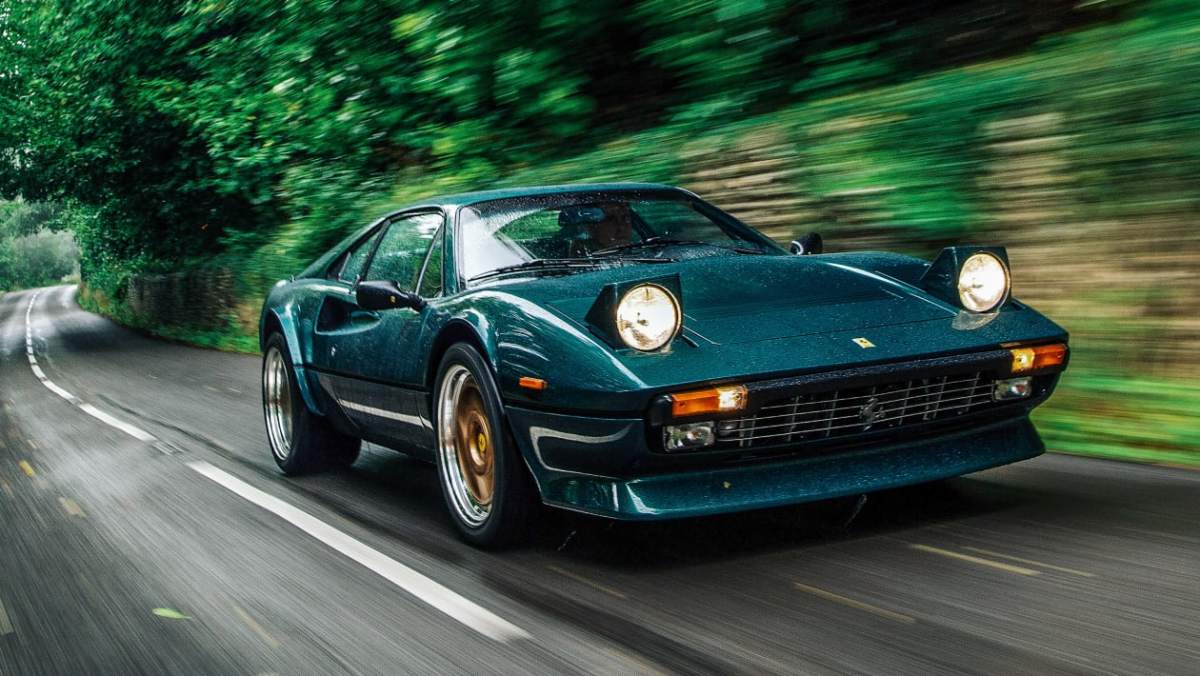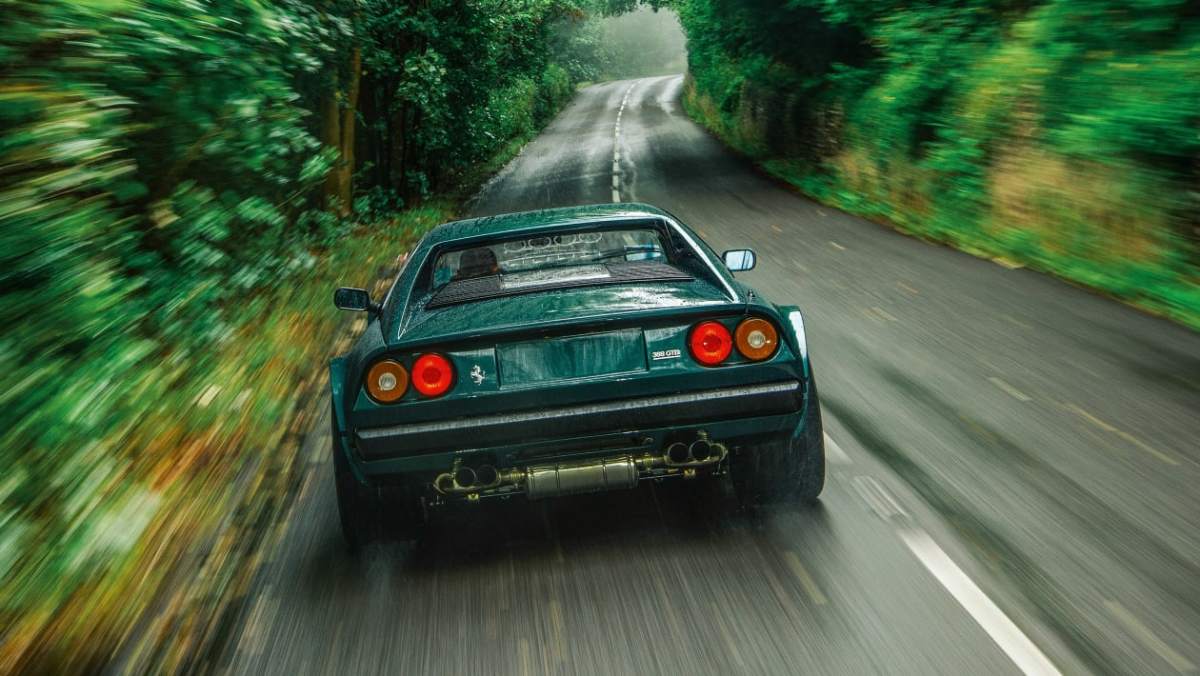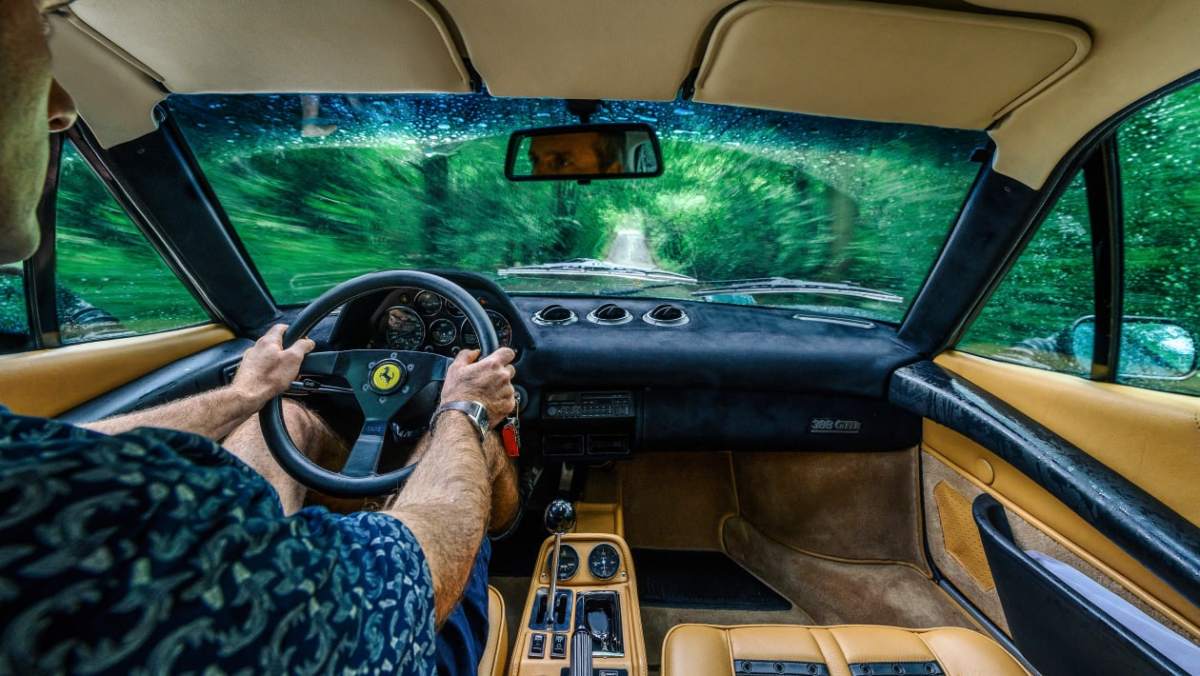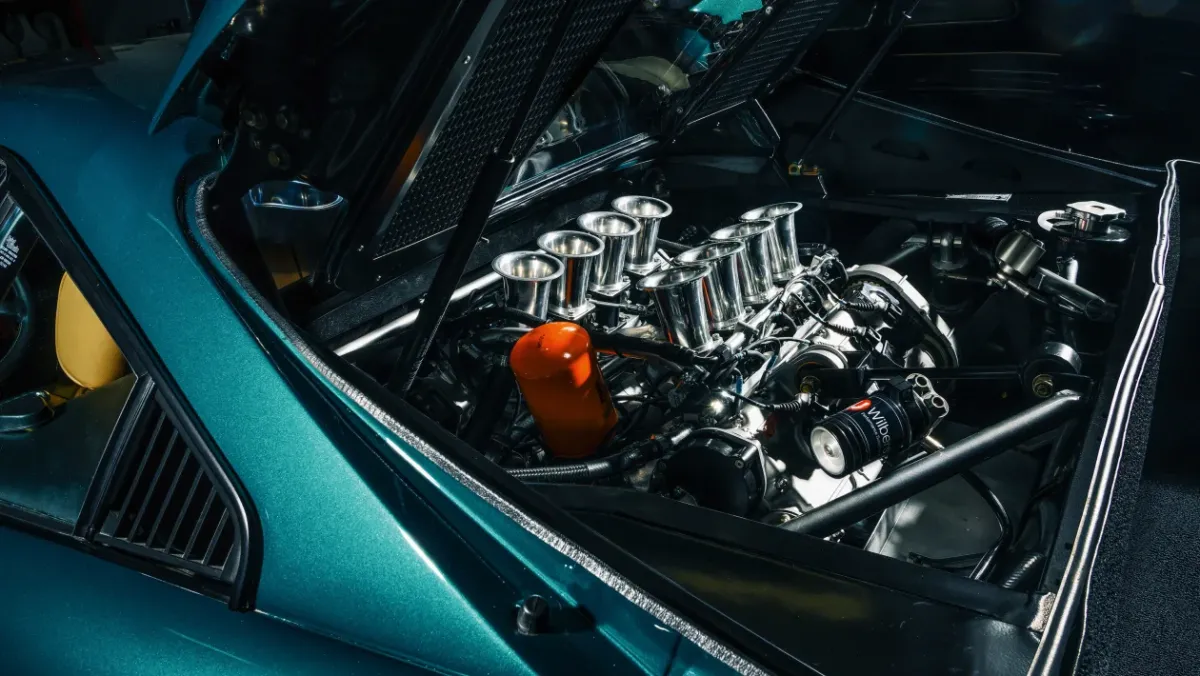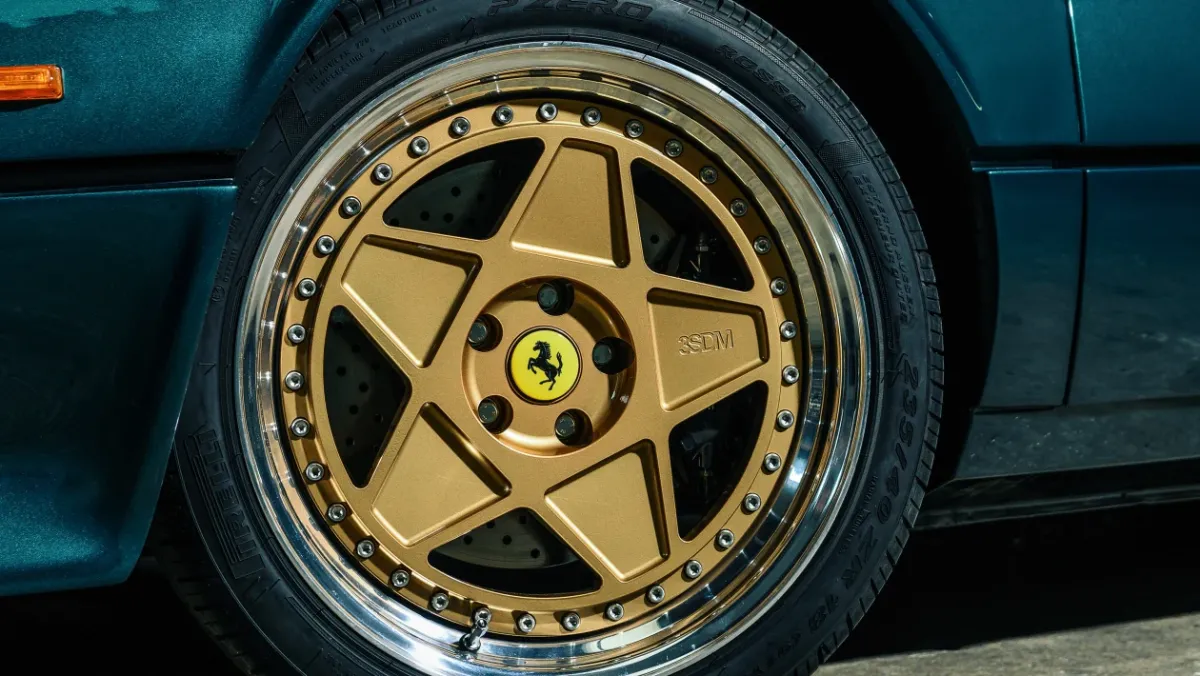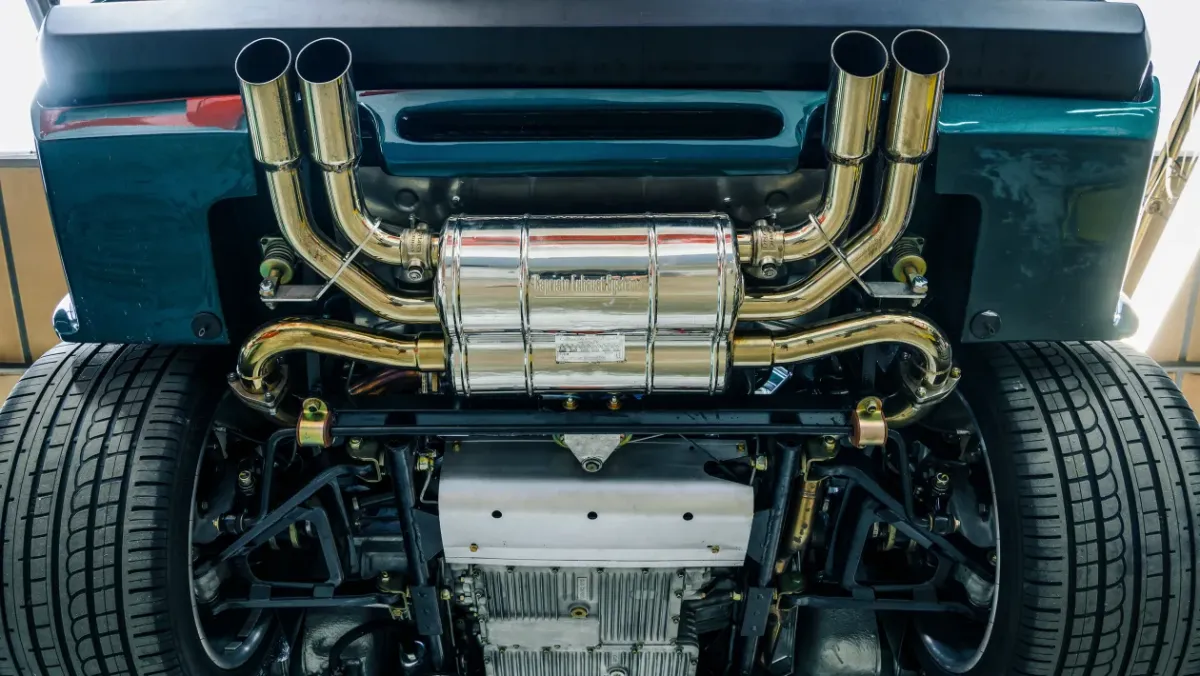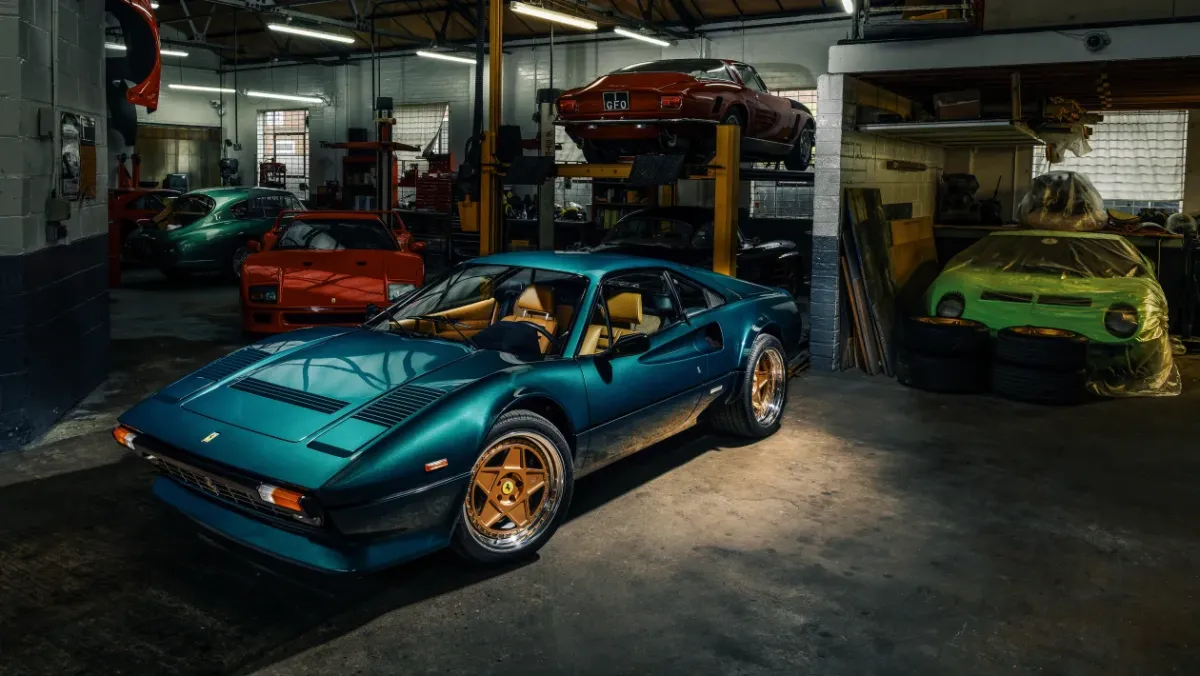If you have the funds, the world is your oyster when it comes to reimagining a classic. We drive an exquisite, money‑no‑object interpretation of the perfect Ferrari 308 GTB
As I settle into the heavily reclined, Daytona-style leather seat – so low it feels like it’s barely an inch above road height – the rainwater drips off my jacket collar and trickles down my neck. My trainers are already like giant, clogged sponges, and water is spraying inwards from the slender side glass that’s cracked ajar to prevent us misting up, given I haven’t yet worked out the antiquated but very stylish air con system.
What a day to drive an old Ferrari. A proper Ferrari, in all its delicate, flighty, I-don’t-like-second-gear-from-cold glory – a Ferrari the old-fashioned way. Yet this is simultaneously something new, too, which I’m already getting a strong hint about from the raspy, tenor-like commotion idling noisily away behind my shoulder blades. The way the revs rise and fall with a guillotine’s snap suggests it is, patently, something really rather special indeed, and I can’t help but blanch at the dowsing we’re about to put it through in conditions more suitable for a powerboat. Here goes…
Moto Technique possibly needs no introduction. In business for 40 years in south-west London, it has restored countless cars, repaired unimaginable destruction, and all with a small, close-knit team of passionate engineers. When evo turns up there’s an F40 in for a service, an Iso Grifo with a few tweaks, a Miura getting an engine build that makes my wallet spontaneously self-combust when I hear the numbers, an old Aston Martin and various other Ferraris; on the walls hang proudly a series of huge photographs showing a full restoration on a total basket case of a… 250 GTO.
Proprietor Kevin O’Rourke first embraced the restomod trend with his own upgraded 246 GT Dino, fitted with a tuned Ferrari V8 (of the type originally installed in the later 308 GT4 Dino) rather than the original iron-block V6. That car garnered huge publicity on both sides of the Atlantic, and led to an ‘Evo’ model (good name) for an American customer, with a 3.6-litre engine and nearly 400bhp. It has also encouraged him to pursue this new idea: a modernised, enhanced take on the classic 308 GTB/GTS.
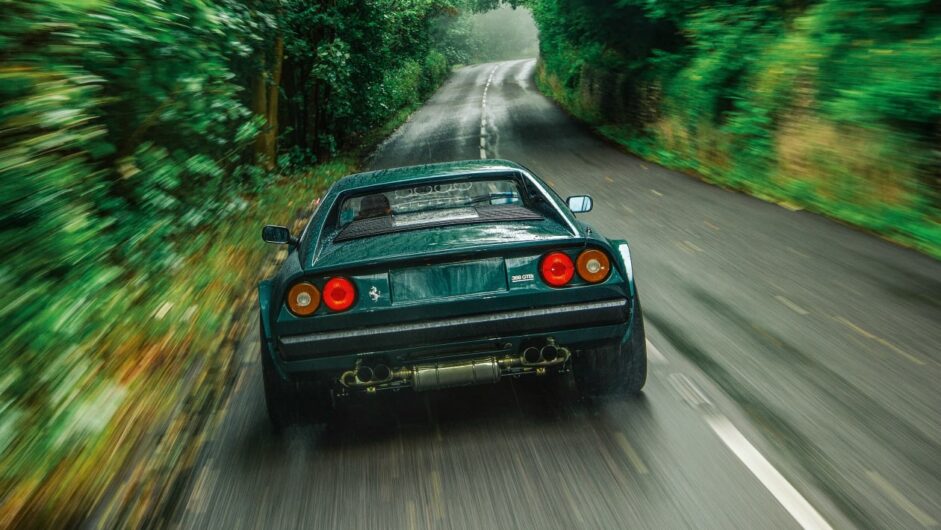
Of course, these cars were fitted with the original 2.9-litre version of the Dino V8 from the factory, so there’s no searching for used engines or buying up ratty donor cars (it turns out it’s cheaper to buy an old Mondial than it is a V8 off the shelf). But the ethos is much the same. Upgraded mechanicals, modernised conveniences if desired, restoration and perfect presentation, and perhaps most of all, a bespoke design service that means, if you can afford to pay, you can have whatever you want.
For some, meddling with Maranello classics will seem sacrilegious, perhaps even more so than the countless old 911s being chopped up and refitted with big arches and over-elaborate interiors, but the 308 family ran to many thousands in production terms, and there’s nothing on this car that couldn’t be turned back to original if so desired in the future. In other words, calm down, those of the Ferrari-apparel-wearing parish.
Naturally, the starting point is a 308 GTB or targa-roof GTS, and ideally the later Quattrovalvole, or QV, four-valve-head version. By this point – 1982 – Ferrari was already using Bosch fuel injection of the primitive K-Jetronic variety, although none of that remains here.
How much work needs to be done on the structure and body – 308s being of space-frame construction with, on all bar the early glassfibre cars, steel panels over the top – depends on the quality of the example you’re starting with. This car was in very fine, original condition, but was still treated to a complete restoration that involved bead blasting everything back to a fresh starting point, replacing and repairing where necessary, and finally a five-layer application of this gorgeous metallic green paint (not a Ferrari colour, but hey, you can have any colour you want, right?). Those with an eye for Leonardo Fioravanti’s masterpiece will notice the rear arches are flared by an additional 50mm, in much the style of the Group 4 308, to house wider 18-inch alloy wheels and 235/40 front and 315/30 rear tyres.
Messing around with something as beautiful as a 308 might seem like daubing a few extra brushstrokes of starter-set oil paint on a Monet, but the infinitely deep lustre to the paint, which is almost hypnotic if you stare at it for too long, combined with the subtle enhancements is restomodding at its finest.
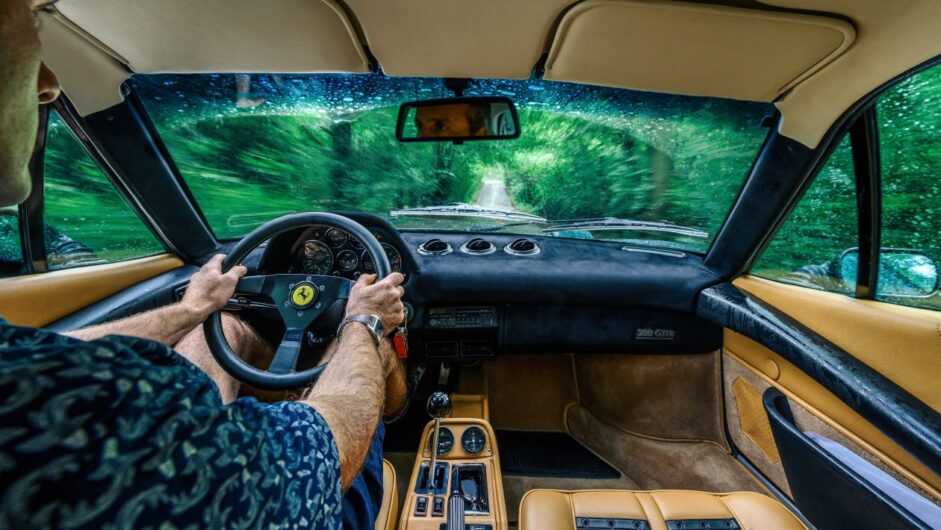
Unsurprisingly, Moto Technique’s team has also been busy under the skin. There’s a new twin-fan cooling set-up under the nose, while the rebuilt steering has a higher ratio and the addition of electric power assistance to take the strain out of low-speed manoeuvring (it ebbs away as the speed rises to maintain the original feel). The rack is also braced, and there are similar measures throughout the car to improve rigidity, such as bars around the engine bay (influenced by the F40’s), as well as welded strengtheners to the wishbones and tighter control around the suspension joints. The dampers are now coilovers from Wilbers, a German firm usually associated with superbike suspension, and comprise remote reservoirs with high- and low-speed compression adjustment as well as a multitude of settings for rebound.
The rebuilt gearbox features custom-made drop gears (at enormous expense) to give longer legs, making this in all likelihood a 180mph car. Much of this is down to the engine, however, which is radically different to the original with its claimed 237bhp. This one has been built to 3.6 litres, but Moto Technique can now take the Dino V8 out to 3.8, all via a new crank and titanium rods from Arrow Precision and bespoke pistons and liners from Capricorn. The cylinder heads have been milled out on a five-axis machine to offer much bigger ports and valve sizes and the engine breathes through a set of Jenvey throttle bodies, the whole lot controlled by a Motec M150 ECU. I’m not allowed to tell you how much power it makes due to an agreement O’Rourke has signed with the owner of this car, so I’ll just let you take an educated guess…
Of course, much of this work is carried out in the name of performance, but it’s also about making the 308 much easier to drive, something O’Rourke defines as a key part of what the – usually younger – restomod buyer is looking for. Not for them the heft and sweat of trying to park an old supercar, or the occasional rough running and temperature gauge monitoring in heavy traffic when they’re used to modern supercars with all their inherent ease of use. You might call that cheating, but when the ‘388 GTBi’ fires up cleanly time after time at a turn of the key, regardless of its temperature, it’s hard not to see the appeal.
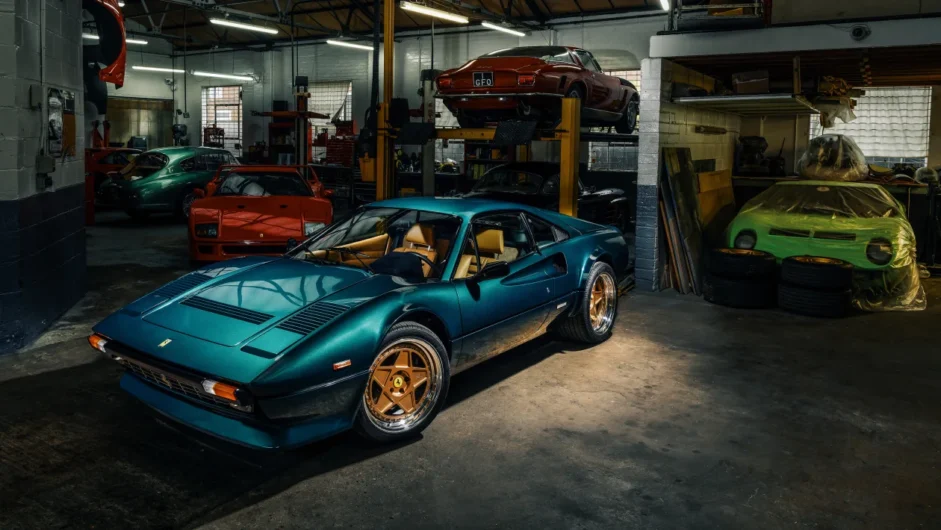
It takes a long time just to stop gazing at the 388. True, it sits too high, but the car is awaiting new coilover units as the original estimated specification proved to be slightly out. But it’s so small overall, and impossibly sharp of crease and clean of line in a way a modern Ferrari or, in particular, Lamborghini could only dream about – infinitely more classy too. The intake trumpets glint enticingly through the perspex engine cover, which is manufactured in-house, as is the carbonfibre engine lid that surrounds it, using skills the team honed making replacement panels for pranged F40s that were superior to those from the factory (the moulds ready for the next ‘off’ hang on the workshop walls)
The V8 likes to have a good chunter on the key before it catches, but when it does you know about it. It dominates the car, zinging frequencies here, there and everywhere and responding instantly to every input. I take a moment to register the interior. Completely retrimmed by O’Rourke Coachtrimmers, an independent firm run by Kevin’s son Robert, it has that rich aroma of soft leather that screams money and really is a thing of exceptional beauty.
There’s a proper dog-leg box, of course, with a metal open gate to slide the long, spangly wand of a lever around with a scrape and a crack, all conducted by a small black ball of a gearknob. It’s every cliche of every supercar road test I read as a kid, but it’s lost nothing in its specialness or driver appeal during that (unfortunately rather long) time since. For a moment the thought crosses your mind that it could be a bit of a challenge, but within no time at all it’s completely obvious that it’s far easier to work smoothly than the majority of poorly designed modern manual ’boxes developed as an afterthought to their automatic cousins: there’s no muscle power required, and the precision of the movement is disarming in its completeness. The open gate means wrong-slotting a cog is almost impossible, too, which tends to build confidence rapidly.
In fact, the 388 as a whole is a doddle to drive, thanks to the upgraded clutch, engine management system and power steering. Even low-speed manoeuvring is easy, and that with an amusingly Italianate driving position of splayed legs, outstretched arms straining to reach a flattened wheel and hips twisted into the centre of the car. It should be a nightmare contortion, but somehow isn’t.

Having experimented with electronic throttles on its Dino projects, Moto Technique is back to a good old analogue throttle cable on this car, and the way you can subtly meter out the power, in almost infinitely smaller amounts, is instantly obvious. The arc of the pedal is long, and every twitch of the toes gives you something more, whether it be a new tone to the V8’s induction howl or a little more shove. What an engine; it instantly wants to pile on the revs, goads you into driving as fast as possible, and positively howls through the Capristo exhaust, set today on the loudest of its four settings. Suddenly it’s uncomfortably clear just how artificial and one-dimensional most modern performance car engines are, and while they might also be loud, there’s something so pure about this V8’s exhaust bark. Even when it backfires on the overrun – something it does a lot when you have it stoked – it’s not the programmed-in fakery we’ve come to expect. I wonder if there’s flames out the back at night?
It’s not long before you’re whipping around the gate almost playing tunes with the V8, while the braking set-up, from a 360 Modena, is more than up to dampening progress when desired. It’s worth bearing in mind there’s no ABS though, for all the other modernities, so while it stops quickly, in weather like today’s it’s easy to lock a wheel if you’re a little too aggressive with the middle pedal.
As it stands, the suspension, for me, is less successful, but then it is due a new set of dampers as previously mentioned, and it has been set up by the new owner to his own tastes. That’s personal preference, but the car is overly stiff for UK roads, hopping from one bump to the next and jiggling its occupants around on even reasonably smooth tarmac. It’s a shame, because there’s clearly a cracking car in there just waiting to get out after a few tweaks of the adjustable elements. You can also sense the playful side of the car too, as a prod of throttle wakes that engine and gets the rear moving, the slippy diff betraying its presence with a scrabble when leaving junctions. It’s not the weather, location or car to be drifting on the lock-stops, but so vibrant is the 388’s character that you sense it would be an easy machine to feel the master of.
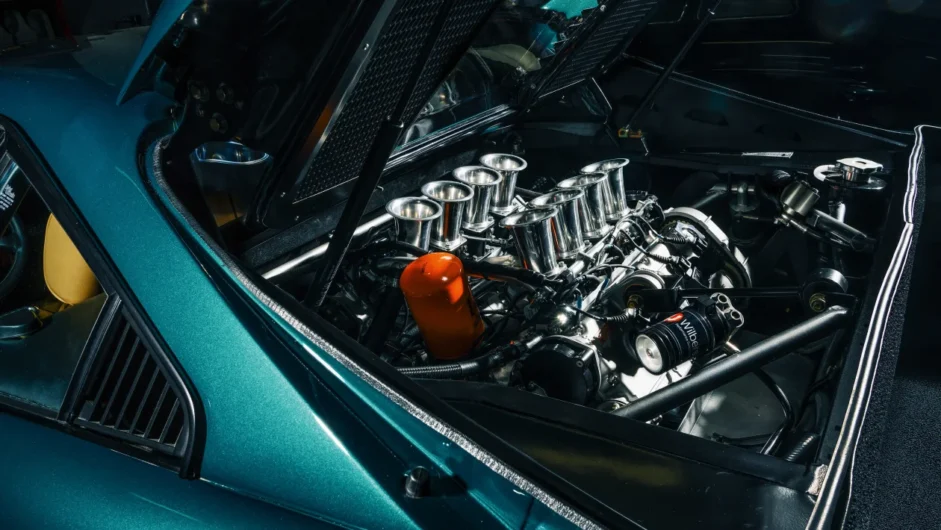
For many, though, that simply won’t be the point. The engine’s multi-textural scream will be a major plus, but just to drive something so beautiful and unique will more than tick the required boxes. No one really needs a perspex cover over their intake trumpets, just as you could of course simply enjoy a good original 308 for a fraction of the price, but – I’m told – that’s not the point. If you can afford it, why not? Talking of money, O’Rourke is once again tight-lipped, despite my constant questioning. So I’m not really any the wiser, but I suspect it’s a case of if you have to ask, you probably already can’t afford it.
Nevertheless, as much as I love this car, there’s another that steals my affections even more. Tucked away in Moto Technique’s workshops is another 308 in build, this time in black, with standard rear arches covering small, original alloys and plump tyres, and with its standard short gear ratios. Inside, under a solid engine cover, lurks a Moto Technique 3.8-litre motor, this one good for 400bhp. It’s not quite finished, but I’m told the first time the chaps in the workshop drove it ‘on test’ the air was blue with ripe expletives at the startling performance from this engine and ratio combination. Now that’s a car I think I want really rather badly indeed, at any price…
This article originally appeared at evo.co.uk
Copyright © evo UK, Autovia Publishing

